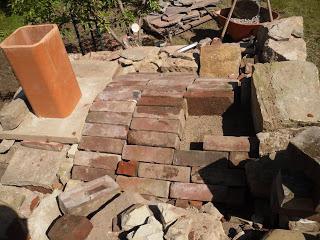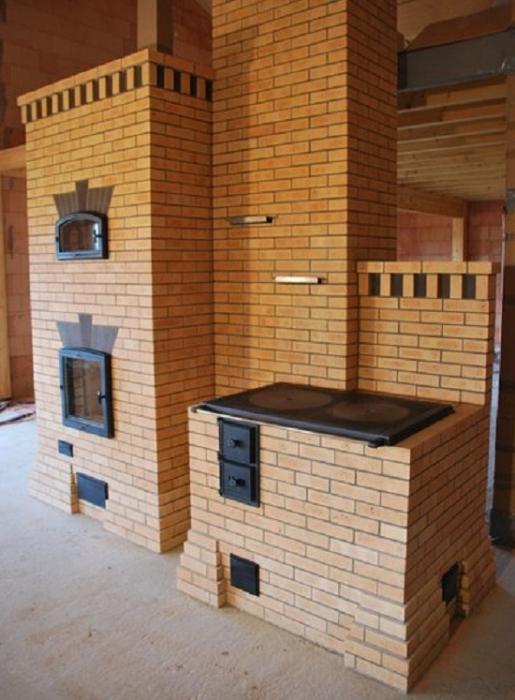Brick stoves must quickly warm and retain heat. To do this, they are laid out from a special stove brick, which accumulates heat and gradually gives it away. The well-known Dutch woman copes with all these tasks well. The simplicity and reliability of this stove allowed it to gain popularity in the 18th century.
A Dutch brick oven is very good for heating small rooms. It is small, it is rare to find such a furnace, the base area of which is more than 1 m². But it heats very efficiently, its efficiency reaches 80%. Despite the name, it was invented in Russia. Outside, the Dutch oven was often laid out with tiles. And now this is the most common design.
In cross section, it is square or round. It has very thin walls, not more than one or two bricks in thickness. Other distinctive features of this stove: a large firebox, channels allow evenly warming up the entire body, the service life is about 25 years. Bad care can put her out of action. For example, not cleaned in time channels clogged with soot are the main cause of the malfunction. And overheating will lead to cracks in the masonry, and this is already irreversible damage. In size, the Dutch oven is small (3x3 bricks), medium (3x4) and large (4x4). Its height is about 2 m.
Despite its light weight, the Dutch oven still needs a special foundation. The firebox is located quite low, 30cm from the floor. This technique of the location of the furnace allows you to quickly warm the room in height. To fold it, it’s nice to use the services of a professional. But due to its simple design, a Dutch oven, made with bricks of its own, is often found in small suburban and country houses. First you need to determine where the Dutch oven will be located.

Next, a waterproofing layer is laid, it can just be a plastic film. Then a layer of sifted sand 1 cm thick is poured. The surface is carefully leveled. If the room where the oven will stand is small, then the foundation can not be arranged. Next, a sequential laying of bricks is carried out according to the scheme. Brick is better to use refractory, since the walls are quite thin. The third row is made of refractory bricks, the grate is laid on it . In general, initially the Dutch oven did not have a grate and burned much worse. In the fourth row of masonry, the bricks of the back wall are laid out without mortar, this is necessary for possible cleaning of the stove. These bricks are called “knock-outs”. The furnace door opens from top to bottom. The pipe is formed starting from the ninth row of masonry. A valve is installed, fixed with an asbestos solution. After masonry is finished , the Dutch oven should be dried for two weeks. This stove can be very beautifully tiled. But the tile must be heat resistant.

The advantage of the Dutch oven is its increased fire safety, as well as the fact that with a relatively small size, it is able to warm rather large rooms.